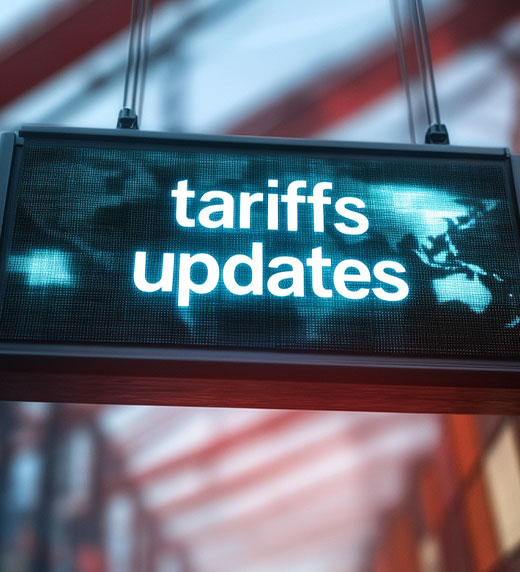
Updated August 11, 2022
With the rapid adoption of city and county shelter-in-place rules and state lockdowns (i.e., Hawaii) many employees found themselves working from locations that they never expected to be working from and for much longer than expected. Now employers have begun to ask, "Where are my employees working from? And what do I need to consider as a result of having most, if not all, my employees now be remote employees?"
Unfortunately, the answer isn't easy or straightforward. Having employees working remotely can potentially impact the employer's state income tax withholding and business activity taxes (e.g., income, franchise and gross receipts), particularly due to recent regulatory updates.
Generally, state income tax withholding is required in the state where the employee is providing services, NOT the state the employee resides. There are exceptions to this rule, for example, if there is a reciprocal agreement between the state of residence and the state where the work is performed. Reciprocal agreements, most commonly seen on the East Coast, allow residents in a neighboring state to not have to file and pay income taxes on wages earned in the non-resident state. However, due to COVID-19, many employees are now working from their homes or maybe wherever they were when the shelter-in-place or lockdown rules were executed.
Having employees performing work in these new jurisdictions may require employers to register with the state and begin withholding payroll taxes on that employee's wages.
But at what point is that required? After the employee has been there a week, two weeks, a month, two months, longer? Unfortunately, many states remain silent on the length of time that an employee must be working from that state to create a withholding requirement.
The good news though is that the states that have started addressing this question via guidance or law changes, have said that so long as the employee's telework location is temporary and a result of the COVID-19 pandemic, the state will NOT seek to impose withholding requirements. However, employees that choose to continue working from their remote location after an applicable work from home order has been lifted could be subject to state tax withholding in that state/city.
Income tax/BAT nexus can be established by physical presence and/or economic nexus. Numerous states have some sort of economic nexus rule or have set economic nexus thresholds, but regardless of whether or not a state has an economic nexus standard, the physical presence of an employee working within the state generally establishes income tax/BAT nexus. That being said, what happens now that employees are working from states that they have never worked from before? Does that employee's inability to travel to their normal office location (which may be in another state) now create income tax/BAT nexus in the state or city that they are now working from?
Prior to COVID-19, states had taken a pretty hard line that having one employee in the state, even if for only one day, could subject that business to the state's business tax (income/franchise/gross receipts). Some states had expanded physical presence to mean the employee had to be in the state/city in excess of seven days to create physical presence nexus, with other states defining it as 10 days. Now with COVID-19 shelter-in-place currently approaching 10 weeks in some areas, businesses must now consider what new jurisdictions they might have income tax/BAT nexus and whether they will need to file any additional 2020 state/locality tax returns due to the location(s) of their remote employee(s).
Similarly, some states recognized the implications of remote employees on business taxpayers and have provided COVID-19 nexus relief stating that the state's tax department will not use someone's temporary location as the basis for asserting BAT nexus in the state. Georgia even went so far as to say that an employee's temporary location would not void Public Law 86-272 protection for that employer so long as that employee's location is temporary and there remains an "official work from home order issued by an applicable federal, state, or local government unit."
The fact that Georgia addressed P.L. 86-272 implications is much appreciated as most states have remained silent on this even if they have provided general COVID-19 nexus guidance. Re-evaluating P.L. 86-272 protection is something any business that has previously claimed protection should do, as having non-sales employees within a state is considered an unprotected activity and will void any P.L. 86-272 protection previously applicable to the business taxpayer. Consequently, it may cause business taxpayers to not only have additional state income tax liabilities but also impact the amount of sales subject to throwback to the state of origin (if goods are shipped from a state with a throwback rule).
The key to ensuring than an employee's remote location does not create income tax/BAT nexus is to make sure the employee's location is in fact temporary. If an employee chooses to remain in their remote location after an applicable work from home order has been lifted, the COVID-19 nexus relief may no longer be applicable. However, it is less clear if even a temporary remote location will void P.L. 86-272 protection, especially as states have more recently pushed against the application of P.L. 86-272 protection in general, as it limits their ability to tax out-of-state taxpayers.
Similar to BAT taxes, sales and use tax nexus has historically been created by having even just one employee visit the state, let alone reside there for multiple weeks. While the Wayfair case created economic nexus rules for most states and many localities, the state's physical presence rules remain in place post Wayfair. Having employees temporarily reside within a state where the business is not already collecting and remitting sales/use tax may now subject that business to new sales/use tax registration, collection and filing requirements.
Most states that have considered the implications from COVID-19 remote employees to payroll tax withholding and BAT nexus have also recognized the need to address the impact on sales/use tax nexus. These few states have issued guidance that sales tax nexus will be "waived" so long as no other factor created sales/use tax nexus — meaning if the jurisdiction's economic nexus thresholds are met, or if the taxpayer had property in the state in addition to the remote employee, then the state would not waive sales tax nexus.
In 2017, the Tax Cuts and Jobs Act (TCJA) brought sweeping changes to the federal income tax law. One notable change was to the home office deduction. Prior to TCJA, W-2 employees could potentially receive a tax deduction for unreimbursed employee business expenses, including qualified home office expenses if they itemized their deductions and met the two percent (2%) adjusted gross income (AGI) threshold for miscellaneous expenses.
Under TCJA, miscellaneous expenses were suspended completely. In other words, the number of taxpayers that could benefit from the home office deduction was severely restricted. W-2 employees can no longer benefit from a federal home office deduction, even if their employer requires them to work from home. Instead, post TCJA, qualified home office expenses are only available for self-employed individuals or those who own partnership interests and use their home “regularly and exclusively” for business during the tax year.
Unfortunately, there have been no revisions to the TCJA home office rules included in the 2020 CARES Act or the 2021 Consolidated Appropriations Act.
According to the IRS, partnership expenses are only deductible on a personal return if the partnership agreement expressly states that the partner must pay the expenses personally. Therefore, if you wish to take a home office deduction related to your partnership activity, be sure that your partnership agreement includes language stating that each partner must pay for these expenses personally without reimbursement.
Generally, home expenses must be categorized as direct or indirect when calculating the deduction. There is also an allowable simplified method to calculate home office expenses.
Direct expenses
Expenses that are directly allocable to the home office area — for example, repair and maintenance costs made in the home office — are fully deductible up to the business income limitation.
Indirect expenses
Indirect expenses need to be allocated between personal and business use and are also subject to the business income limitation. Some examples of common indirect expenses include property taxes, rent, depreciation on a home you own, homeowner association fees, utilities and casualty insurance premiums. A reasonable method of allocation must be used. While a ratio based on square footage of the home office vs. the total home is the most common method, the number of rooms used for personal vs. business use has also been allowed.
Business income limitation
The home office expense deduction is limited to the gross income generated by the activity the home office is used for. This is known as the business income limitation. Deductions that are limited can be carried forward subsequent years.
Other important information
While the home office can provide a great tax deduction, taking this deduction could have a tax impact when you sell your house. When using the actual home office deduction method, you will have to pay a capital gains tax on the depreciation deductions for the office, whether or not you actually deducted depreciation each year. This is the annual deduction you are allowed for the yearly decline in value due to wear and tear of the portion of the building that contains your home office. These recaptured deductions are taxed at a 25% rate (unless your income tax bracket is lower than 25%). The amount subject to recapture will not be considered in your primary residence sale exclusion.
Despite employees not being able to deduct home office expenses for federal purposes, state treatment may vary. Each state and local jurisdiction’s rules about unreimbursed employee business expenses should be reviewed since the nature and allowance of the deduction may differ.
What should employers do? The most important step is making sure you know where your employees are working from and then monitor their time in that location. Employers should also continue to monitor the guidance issued by states where they have employees currently located.
What should employees do? Employees should keep track of the time spent working at their temporary telework location, monitor payroll tax withholdings on their paystubs, and inform their employer if their current location is expected to continue once shelter-in-place/lockdown rules are lifted. Becoming more knowledgeable about their current location, state of residence, normal office location payroll withholding and personal income tax rules will help employees review their payroll tax withholdings and assist them as they consider any new state tax filings for 2020.
Ideally, the hope is that instead of waiting on all the states to each issue their own guidance on payroll withholding, BAT nexus, and sales/use tax nexus, there would be some level of federal guidance, as COVID-19 is a global pandemic that has implications for everyone in every state and is not a "natural disaster" limited to one or even a few states. However, it is unknown if that will happen and for now, we must rely on each jurisdiction's approach to providing relief to taxpayers whose workforce may be unexpectedly more dispersed across the country or even the world due to COVID-19.
For the latest regulatory compliance changes and other information on keeping your organization running through disruption, visit our COVID-19 Resource Center.


